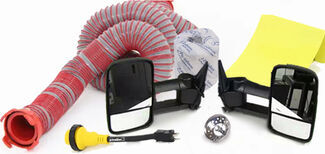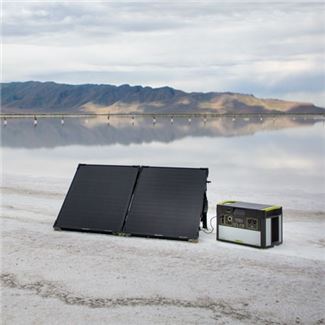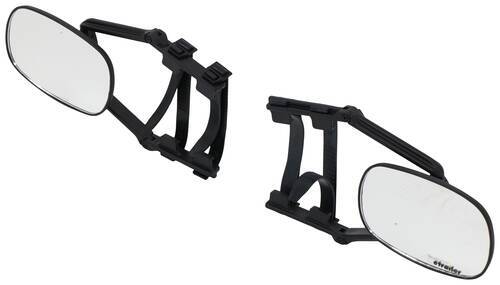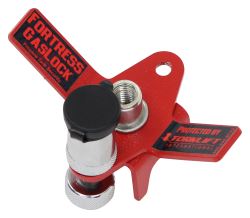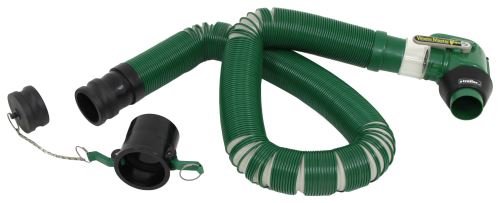
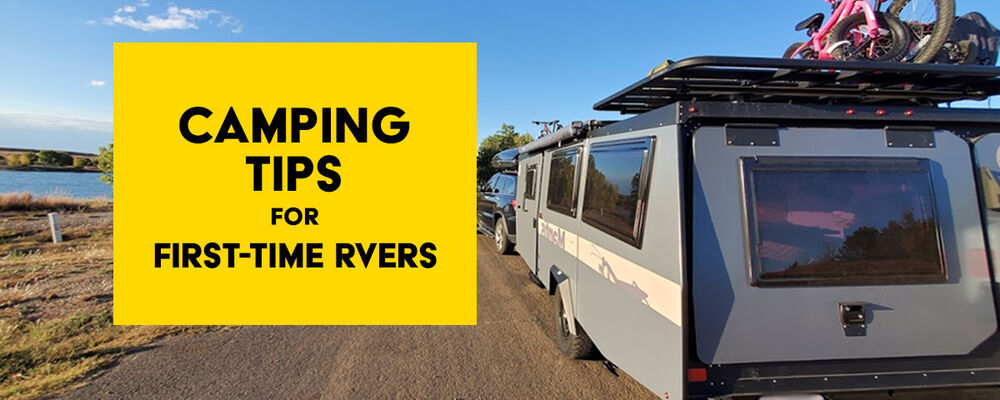
Camping Tips for First-Time RVers
A Walkthrough of Your First Year of RV Ownership
Tips for Before Your First RV Camping Trip
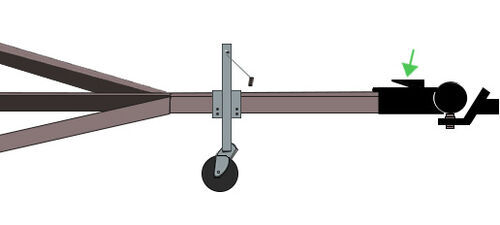
1. Learn How to Hook Up Your Camper
Jack up trailer so coupler is higher than hitch ball Back vehicle up to coupler Lower trailer onto coupler Latch coupler and insert safety pin Retract jack completely Add safety chains and plug in wiring Hook up breakaway cable Test: Pull forward to make sure trailer stays coupled; test brake lights/blinkers to make sure brake controller works
Open 5th-wheel hitch jaws Back truck toward king pin (lower tailgate if necessary) Latch 5th-wheel hitch jaws (even if jaws latch automatically, check to make sure they closed properly) Drive forward to ensure coupler is properly latched Plug in wiring Test: Pull forward to make sure 5th wheel stays coupled; test brake lights/blinkers to make sure brake controller works
For the easiest time, make sure you're parked on as level a surface as possible when hitching up. Ensure your jack is completely retracted before you drive off—more than one camper has ruined a jack by leaving it down and bottoming out. Make sure to have a spotter, or grab some alignment tools to make the job easier.
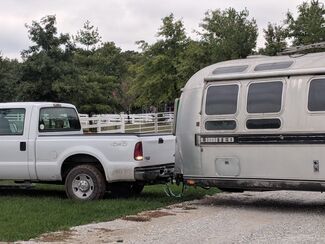
2. Learn How to Drive, Park, and Back Up Your Camper
Remember that trailers turn the opposite way of the wheel. If you want the trailer to go left, turn the wheel right. Don't jackknife—aka turn so sharply that the rear of your tow vehicle collides with the front of your trailer. Another reason to have a spotter to tell you when you're getting into danger territory. Don't get frustrated (easier said than done, but at the very least try not to yell at your spotter)
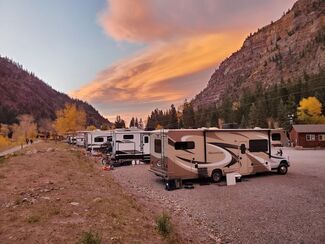
3. Learn About Your Campsite (As Much as Possible)
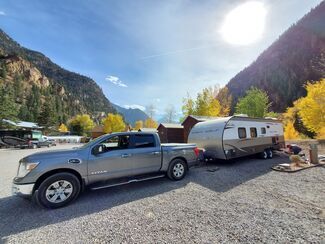
4. Make Several RV Packing Checklists
Tips for Your First RV Camping Trip
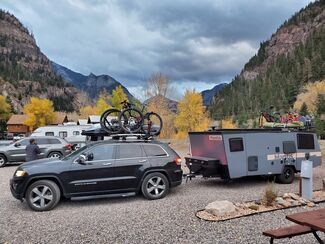
1. What to Do When You Reach the Campsite
Check in with the campground staff and find your campsite Try to park on the most level part of your designated spot. You're going to want a level to indicate how you should place your leveling blocks. (I recommend the kind that stick on the side of your rig.) Level your camper Level your camper left to right by driving onto leveling blocks Chock your wheels Unhitch Level your camper front to back by unwinding the jack until the rig is level. (You'll want a tongue jack stand or block of wood to place beneath it to create a sturdy platform.) Put down your stabilizers. Make sure to put down all 4 (or more if you have them), or your rig will be super wobbly the whole trip.
For more detailed help, check out our 3-step guide for leveling your camper. Open your slides/pop-ups Connect to the power pedestal (if available) (read more about RV power service here) Connect water (make sure to use a water pressure regulator) Connect sewer (leave valves closed) Turn on propane tank valve Turn on appliances (AC, water heater, etc.) Set up your camping chair, open a beer, and relax
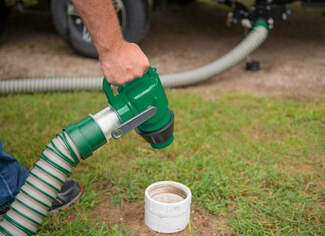
2. How to Dump Your RV Tanks for the First Time
Wear gloves. Never use your potable water hose for your sewer duties. Try to only dump your tanks when they're at least 2/3 full (keep an eye on your sensor so you know how full it is). This helps prevent solids from sticking to the sides of the tank. You'll find that many campers leave their gray tank valves open to let the sink/shower waste water drain. This is typically okay as long as it's not making a muddy mess, but you should always keep your black tank valve closed until you're ready to dump. Otherwise the liquid will drain from the black tank, and you'll be left with muck stuck in the tank. This is a common cause of what's known among RVers as the dreaded "poop pyramid," which happens when waste builds up, layer after layer, until the tank is completely blocked. It's the stuff of RV nightmares. If you do leave your gray valve open most of the time, it's best to close it for a while to let the water build up prior to dumping the black tank. You can then use this gray waste water to wash out the hose after dumping your black tank. Or, of course, you can leave both valves closed the entire time until you need to dump. Tank sensors can lie to you, especially black tank sensors, and especially when your tank needs a good rinse. Gunk (I won't specify what) sometimes sticks to the tank walls and tricks the sensors into thinking the tank is full when it's not. Use a flush valve or other tank rinser to give your tanks and sensors a good cleaning after each dump.
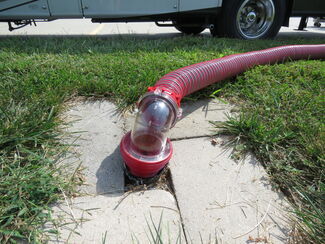
Attach the hose to the dump station hole. Use an elbow to make the connection and hold the hose in place. If you don't have an elbow, insert the hose at least 8" into the hole so it doesn't come unattached while you're dumping. Make sure the valve is closed (you don't want poop shoes), then remove the cap. Open the black tank valve first and let it drain. Then, use a black tank rinser (if you have one) to rinse out any leftovers inside the tank until it runs clear. Open the gray tank valve (the gray tank water will help flush the black tank gunk from the hose). Once the drain runs dry, close the valve. Double check that both your black water and gray water valves are closed. Then disconnect your sewer hose. Use the dump station hose (if available) to rinse the inside and outside of your sewer hose, then around the dump station hole. Add any holding tank treatments now
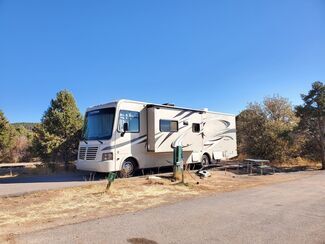
3. How to Practice Good Campground Etiquette
Respecting quiet hours. Many campgrounds have noise restrictions during certain times (note that this includes not running your generator during these hours). If you arrive to the site late, don't yell back and forth, shine bright lights everywhere, or let your dog bark freely. Cleaning up after yourself, kids, and pets. No doggy waste, beer bottles, or trash left behind. Practicing good dump station habits, such as using the hose to wash down spills and being ready to dump so you don't hold up the line when you get there. Staying on your own site and not spilling over onto others' space. Supervising kids and pets. Yes, it's a vacation your little one (or fluffy one) will also love, but just make sure they're having fun while also being respectful of others. Make sure your kids aren't shouting and your dogs aren't barking (or, you know, vice versa).
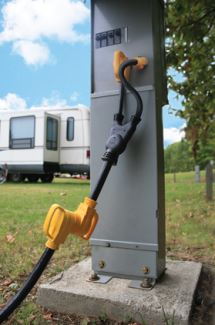
4. How to Use Electricity in Your RV
Rely on your RV's battery bank Use solar power Use a generator
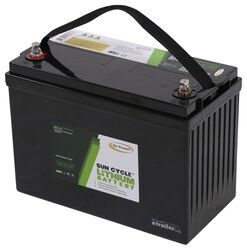
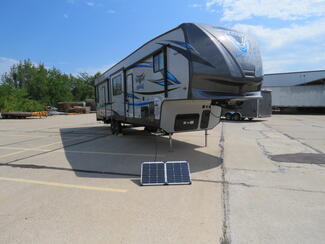
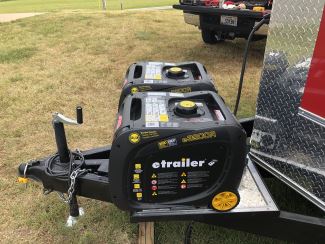
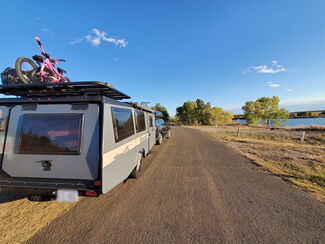
5. What to Do When Leaving the Campsite
Bring in all camper chairs, outdoor rugs, leveling blocks, etc. Pick up any trash or animal waste Disconnect from all hookups Close all vents Make sure your awning is retracted and any antennas you have are down Close/latch your cabinets, refrigerator door, and shower door Make sure your steps are retracted Always do a final walk-around your camper to make sure you're not forgetting anything. Don't forget to look up to check your awning and any other accessories. Don't rush. When you're in a hurry, that's when you'll forget to latch, lock, or close something important.
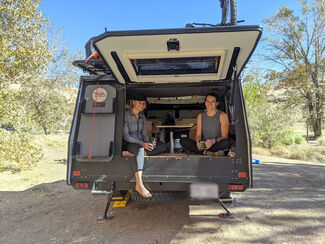
6. Other RV Camping Tips
Keep an outdoor rug outside your camper to limit amount of dirt you track into your camper. You probably also want to pick up a 12V vacuum cleaner and a small mop. You'll be amazed how much dirt and mud you track in. Bring an old-school paper map, in case you end up somewhere without cell service. Always make sure you have enough gas — your RV is nowhere near as fuel-efficient as your daily driver, and in remote areas, gas stations may be few and far between. Take your time. This one might be easy to overlook once you're on the go, hurrying to your next destination or setting up camp after a long day on the road, but it's a lesson many veteran RVers insist is worth remembering: slow down. You make more mistakes when you're in a hurry. And besides, this is supposed to be relaxing.
Tips for Maintaining/Servicing Your RV
How to Store Your RV for Winter
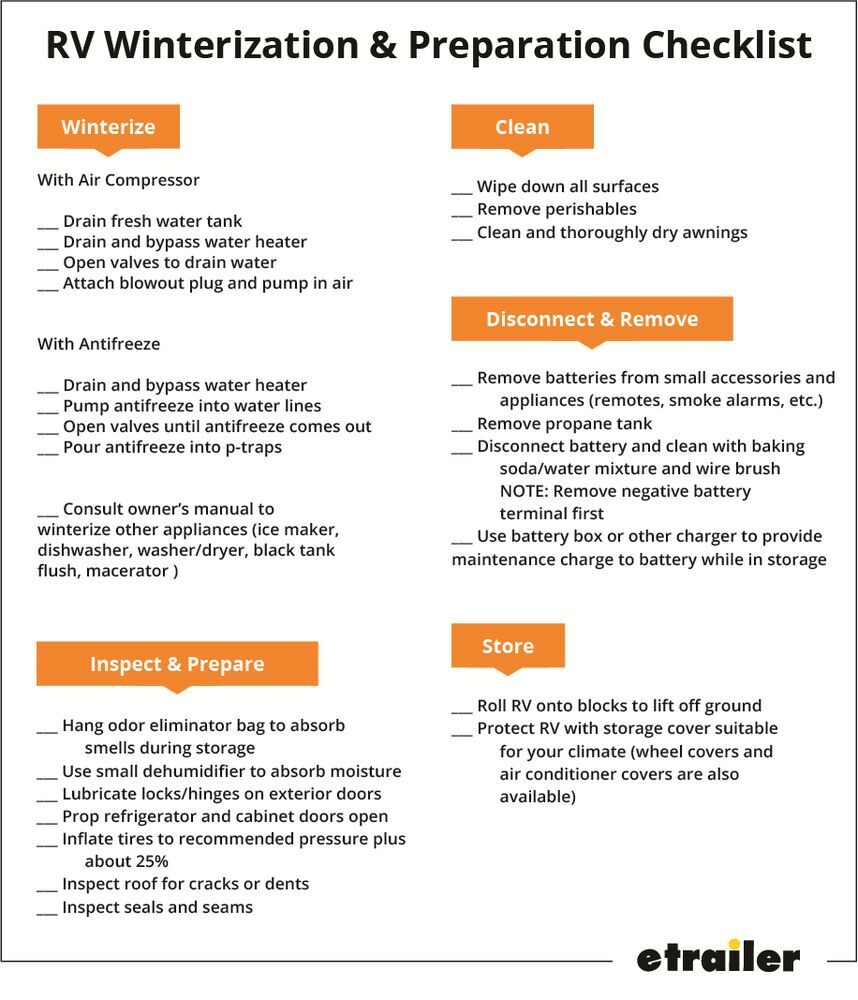
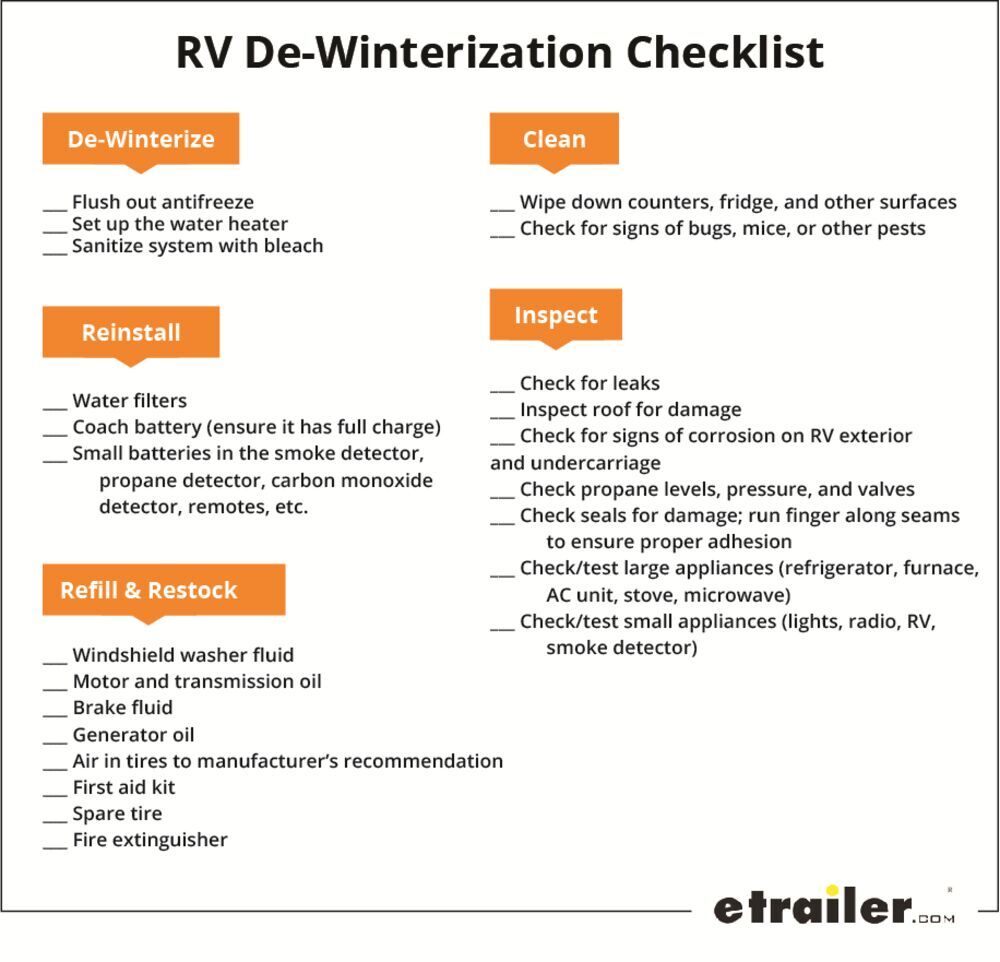

Departments
Towing
- Trailer Hitch
- Fifth Wheel
- Gooseneck
- Towing a Vehicle
- Front Hitch
- RV Hitch
- ATV Hitch
- HD Truck Hitch
- Vehicle Wiring
- Brake Controller
- Ball Mounts
- Weight Distribution
Sports and Recreation
Trailer Parts
- Utility Trailer
- Boat Trailer
- Landscape Trailer
- Enclosed Trailer
- 5th/Camper Trailer
- Car Hauler
- Horse Trailer
Vehicle
Contact & Help

Popular Vehicles
- Subaru Forester
- Ford F-350 Super Duty
- Ford F-250 Super Duty
- Chevrolet Silverado 1500
- Jeep Wrangler Unlimited
- Jeep Wrangler
- Ram 3500
- Toyota Highlander
- Ram 2500
- Chevrolet Silverado 2500
- Subaru Outback Wagon
- Chevrolet Silverado
- Dodge Ram Pickup
- GMC Sierra 2500
- Ram 1500
- Ford F-250 and F-350 Super Duty
- Jeep Grand Cherokee
- Toyota Tacoma
- GMC Sierra 3500
- Toyota Tundra
- Ford Escape
- More >>


